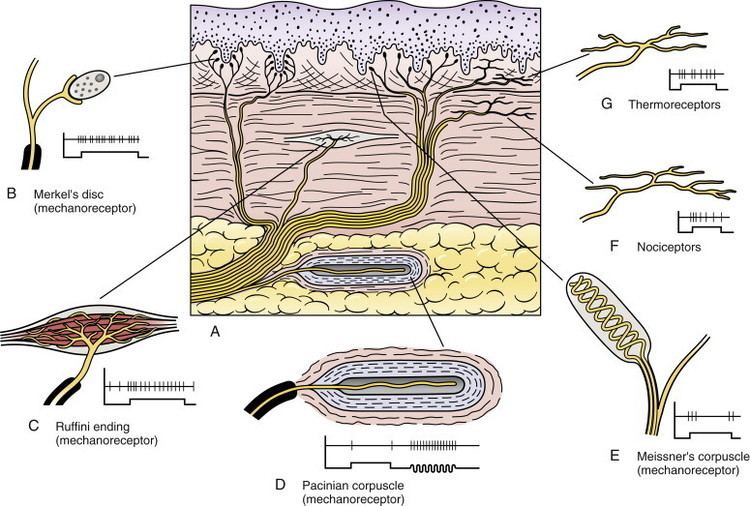 | ||
Ch10b cutaneous receptors
The cutaneous receptors are the types of sensory receptor found in the dermis or epidermis. They are a part of the somatosensory system. Cutaneous receptors include cutaneous mechanoreceptors, nociceptors (pain) and thermoreceptors (temperature).
Contents

Types
The sensory receptors in the skin are:

Modalities
With the above-mentioned receptor types the skin can sense the modalities touch, pressure, vibration, temperature and pain. The modalities and their receptors are partly overlapping, and are innervated by different kinds of fiber types.
Morphology
Cutaneous receptors are at the ends of afferent neurons. They are usually encapsulated in elaborate cellular corpuscles. Generally, they are linked to collagen - fibres networks within the capsule. Ion channels are situated near these networks.
In sensory transduction, the afferent nerves transmit through a series of synapses in the central nervous system, first in the spinal cord or trigeminal nucleus, depending on the dermatomic area concerned. One pathway then proceeds to the ventrobasal portion of the thalamus, and then on to the somatosensory cortex.
